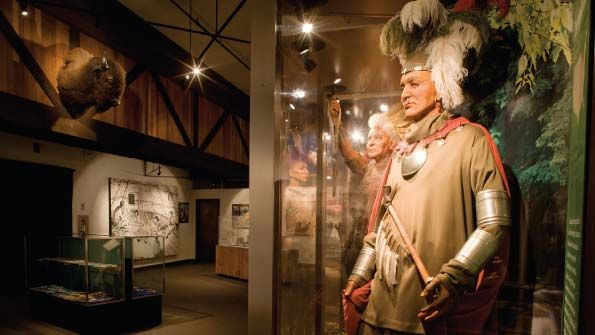
CEDAR AND SALMON, spirit and sky, seasons and stories—the lifestyle of Washington’s indigenous peoples may seem simple in the harried hindsight of modern times, but by the time of European contact in the 18th and 19th centuries, the many tribes of the Pacific Northwest had created complex civilizations. A multilayered web of spiritual and practical dimensions was woven from the food, clothing, shelter, art, song, and storytelling lifestyles of these peoples. Now, superb interpretive centers depict the rich cultures and a living tapestry of Washington’s native peoples.
At the spiffy new Hibulb Cultural Center in Tulalip (hibulbculturalcenter.org), visitors can see and touch a cedar tree model that demonstrates how the Tulalip people made use of every part of the tree—bark, wood, resin, root. A longhouse illustrates the most conspicuous use of cedar: for housing.
When the Suquamish Museum (suquamish.org) opens on Bainbridge Island this year, it will house nearly 10,000 baskets, carvings, and other artifacts.
Out near the northwesternmost point in the continental U.S., visitors to the Makah Cultural and Research Museum (makah.com) in Neah Bay can see modern uses of cedar by tribal artists—such as a full-length cape and skirt—then step into the ethnobotanical garden and sample salal berries, a staple of Northwest diets. The museum also contains extensive exhibits on the famous archeological exploration of Ozette Village, a pre-Columbian coastal center whose six longhouses were buried by a landslide about 500 years ago and thus perfectly preserved.
On the inland side of the Cascade Mountains, the Yakama Nation Cultural Heritage Center (yakamamuseum.com) near Toppenish depicts the rich history of one of the Northwest’s largest Native groups. Salmon was also key to the lifestyle of Columbia Basin peoples, but here tipis and earth dwellings substituted for coastal cedar longhouses. The Yakama Museum contains full-size replicas of these indigenous dwellings for visitors to explore.
In Spokane the Northwest Museum of Arts & Culture (northwestmuseum.org) has one of the pre-eminent collections of Plateau Indian culture in the U.S. with art, artifacts, and living history from as far back as the 10th century. —ERIC LUCAS





